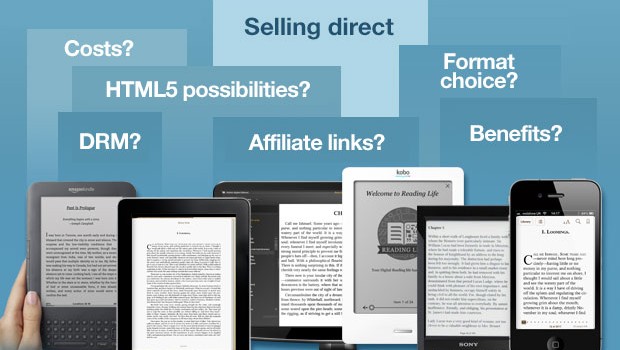Selling direct – what you need to know
The concept of selling direct to consumers (D2C) is, traditionally, alien to most publishers. For centuries, their route to market has been almost exclusively through intermediaries. Then along came digital publishing with a bundle of technologies that gave publishers the opportunity to bypass the intermediaries and sell direct to their readers. This prospect looked interesting. Despite being an industry populated largely by non-technical people, they had recently got to grips with converting their print backlists into digital books. No reason why they couldn’t get to grips with D2C as well.
But there is a vast difference between the technical and commercial know-how needed to underpin decisions to create digital books and that needed to operate a viable D2C offering. In our experience, many publishers don’t understand what they can and can’t do with D2C. They don’t seem to have a clear idea of the huge opportunities D2C offers, nor do they seem to understand the limitations of selling digital books in the current market.
The digital book market is no longer nascent, but neither is it mature. The technologies enabling publishers to create digital books and consumers to read them are still fairly cumbersome. Proprietary systems, formats, devices and retailers mean that there is still no such thing yet as a universally viewable eBook. And until there is, the route to market will not be straightforward.
So, what do publishers need to know if they want to ensure a good and sustainable return on their D2C investment? At the very least, they need to understand:
- The accessibility and functionality limitations inherent in any format choice – ePub2, ePub3, .prc (formerly .azw or .mobi), KF8, various fixed layout formats, etc. Some examples: (i) going for an ePub2 format might look like a good move, but you won’t reach your Kindle customers direct if you want to apply full DRM to these titles; (ii) fixed layout or ePub3 might mean that your cookery book looks great on an iPad, but there’s currently no way to sell a downloadable fixed layout eBook direct to most eBook readers or tablets unless you’re a device manufacturer or big retailer (e.g., Apple, Amazon, Barnes & Noble); and (iii) each eReader platform or device (e.g., iOS, Android, Amazon, MS) supports a slightly different fixed layout format.
- The huge cost differences associated with conversion to the various formats. For example, if you’re converting a novel into ePub2 format, you’re probably going to spend tens of pounds, whereas creating an enhanced eBook in a single fixed format (with embedded video, text synchronisation and, perhaps, animation) will cost you hundreds (in some cases thousands) and building an app will definitely take you into the thousands.
- The benefits of selling direct as opposed to selling via an affiliate link from your website. For example, with Amazon, although you’re unlikely to be able to match or exceed Amazon sales (unless you’re Pottermore) and might, in the short term, earn more, you stand to lose in the long term because Amazon – not you – will ‘own’ the relationship with the readers and will have access to their data. Every time your readers buy books from other sites, you miss out. Sell direct, though, and with every sale you open the door to a relationship with a reader and gain access to valuable data on which to build this relationship.
- What Amazon and Apple will allow an eCommerce-enabled publisher to do, and what they don’t like. For example, if you’re selling direct as well as via Amazon, they don’t like you undercutting them, so you have to find other ways of attracting consumers with price promotions (using members’ discounts, voucher codes, etc.). With Apple, linking your enhanced eBook on their iBookstore to your eCommerce-enabled website full of attractive digital products, including eBooks, is a no no.
- The impact of full (strict) DRM, social (digital watermarking) DRM and DRM-free strategies. For example, consumers don’t need software to download a DRM-free or digitally watermarked eBook, but once an eBook has been encrypted they do (e.g., Adobe Digital Editions); increasingly, D2C publishers are ditching DRM, having decided that the pros of selling DRM-free books – happy consumers who’ll come back for more -– outweigh the cons of piracy. Ask yourself this question: Does full DRM help you achieve what you want to achieve for your authors?
- The changing shape of the eBook market and the HTML5-based opportunities just around the corner. This deserves a separate article! But the point here is that publishers who are (or soon will be) selling their titles direct should be busy familiarising themselves with what HTML5 means for eBook accessibility and discoverability. For example, HTML5 is already changing the way readers can access ebooks, it’s delivering browser-based reading and it’s facilitating offline caching and alternative subscription sales models.
Choosing to go direct might appear to be a simple decision, but make sure it’s an informed one. The required investment isn’t prohibitive and, if you take note of the points we’ve touched on here and make a commitment to consumer (not trade) engagement, you might surprise yourself with the returns you can achieve. Just as retailers have not shown any reticence about getting into publishing, so publishers should not be reticent about getting into retailing.





